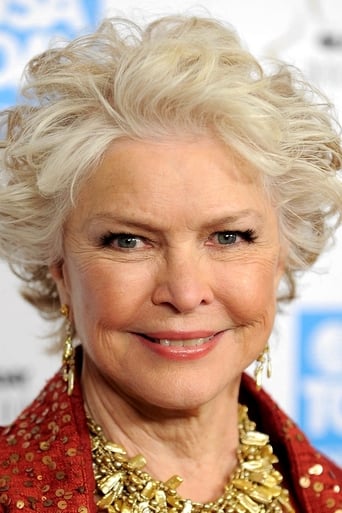stryker_sixteen
This was probably the worst adaptation of a book I have ever seen. The book was absolutely unforgettable, the movie is very forgettable. This is not to say the actors were bad. I thought Sheryl Lee, Renee O'Connor and Eric Schweig all did credible jobs acting, considering the Political Correct dribble that was passed off as writing. If I were James Alexander Thom I would NEVER option another book to Hollywood considering the treatment of this book. If you want the real story of a woman who trekked nearly 1000 miles from Northern Kentucky to her farm in Virginia as winter was coming on. No weapons, no blankets, her clothes rotting off, and the only food was that which was found along the way, Follow the River by Jim Thom is the book for you.
PeachHamBeach
I submitted a review not long ago, but I don't think it was accepted because I had a lot of political commentary about not so politically correct stuff.In 1985, when I was 14 years old, my mother came into my room and handed me a paperback book called FOLLOW THE RIVER. "This is the most INSPIRING story I've read in a long long time." I, not being much of a reader at that age, took this book, and COULD NOT PUT IT DOWN!!!It is, to this day, my all time favorite novel. That they made a little TV movie based on this wonderful work was bad enough. They should have made an epic feature film about the unforgettable protag and her true story. But to make a TV movie that squishes 5 months in a woman's life into 2 commercial ridden hours, and sanitizes the facts too??? Foul!!!Mary Draper Ingles was a young mother of three. Her third baby was actually due to be born any day. On July 8, 1755, Shawnee Native Americans raided her settlement in Virginia, killed many of her neighbors, and even killed her mother. Then they abducted her, her two little boys, her sister in law Bettie, and a neighbor named Lenard, and took them from Virginia, up into W. Virginia thru the New River Gorge, on to the mighty Ohio River, and into Southern Ohio (present site of Portsmouth). Mrs. Ingles' life is scattered, devastated and all but destroyed. Eventually, in a few weeks as a captive, she loses her family. Her sons are adopted and taken to still another faraway Shawnee settlement. Bettie is given as a wife to a Shawnee man, and Mary herself is sold to French traders, along with a new friend, Ghetel, an elderly Dutch widow. Her life further ruined and disrupted, she makes a fateful decision: either return home to Virginia and to her husband William, or life is not worth living. Will is all she has left to remind her of who she truly is. She must return to him.The movie devotes a mere 20 mins. to Mary's 1000 mile walk home. The book is so much more fun to experience, so rich in detail, and author James A. Thom constantly lets you inside Mary's head to know her thoughts, fears, regrets. She decides she must abandon the baby girl she had en route to her slavery. A Shawnee woman has pretty much taken over the baby anyway.
In September 1755, Mary and the elderly Dutch woman Ghetel escape while on a salt making assignment at the Big Bone Lick in western Kentucky, even father from home than the town in Southern Ohio, and from western Kentucky, through Southern Ohio, through W. Va and the formidable New River Gorge, formed through the centuries into tall, dark, rocky palisades that Mary, who has been weakened, starved and fatigued by her travels already, is forced to CLIMB in order to reach her husband. On top of this, it is already wintertime.None of these wonderous facts are in the movie. Instead, we are given a completely fictitious segment at the end. It just seems all watered-down, sanitized, politically correct. The ending of the movie is NOTHING AT ALL like the one in the book. Mary's two sons were taken from her. Her younger boy died right after he was taken from his mother. Thirteen years passed before Mary laid eyes on the older son again. The baby daughter was NOT BROUGHT BACK TO MARY BY CAPT. WILDCAT. The baby daughter was adopted by a Shawnee woman and never seen by her natural mother again. The ending of the TV movie was like a politically correct fairy tale. Because of the depression, the emotional toll the events took on Mary Ingles' life, her hair turned prematurely white at the age of 23. But thankfully, she did return to her husband William, she did recover from her malnutrition, and she had four more children. In 1768, she and her oldest son, Thomas, who was 5 when she saw him last, were reunited after he was ransomed. Bettie Draper, who was given to be the wife/concubine of a Shawnee man, was also ransomed, but died at the young age of 42, doubtlessly having never fully recovered from her ordeal. Fact: Life isn't fair. Bad things happen to good people. Things don't always end up well and fine. The history of this country is not a fairy tale.
In my opinion, if you're afraid of not being politically correct in telling the facts, don't make the movie.




